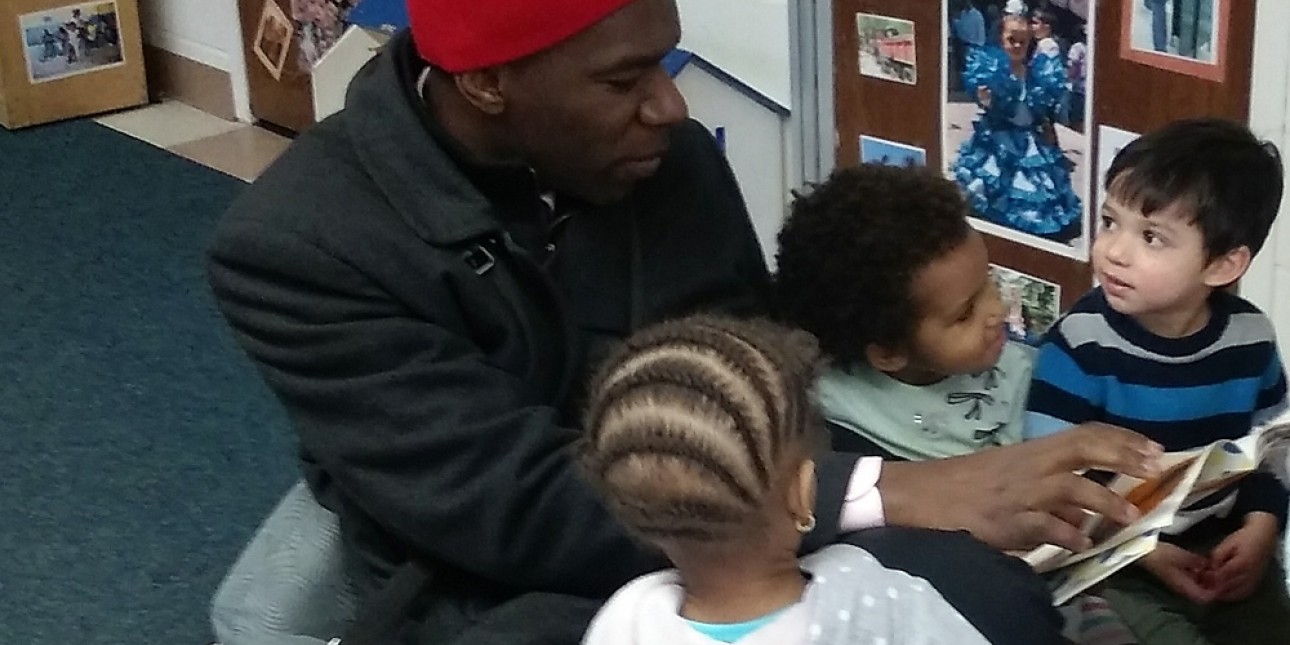In the Classroom: The Sunshines

written by Lead Teacher Demita Hill
What is Pre-literacy?
I am taking a literacy course at Penn and recently read an interesting article about pre-literacy skills for infants and toddlers. It took me back to my childhood when my mom used to read to me.
Parents and caregivers lay the foundation for literacy in the very first few years in life. It’s very important to give children experiences with reading, writing, and print well before they begin reading and writing by themselves.
Early literacy does not mean teaching reading to infants and toddlers; that is not developmentally appropriate. Reading, writing and language evolve from early age-appropriate skills such as: handling books, looking at and recognizing words, comprehending pictures and a story, and interacting with books verbally.
You can start reading to your child as an infant. Children love to read the same book over and over and over, even if you get tired of reading it! Repetition is very important and it's how children learn.
Many parents may feel like they don’t have much time for literacy activities beyond the nightly bedtime story. But, every day interactions are all it takes. Talking, singing, playing sound and word games, reading, writing, and drawing with your child are all great ways to establish a good literacy foundation.
By engaging your child in songs and games, you help them develop listening and speaking skills. Just listen to your child to learn about the stories and songs s/he enjoys the most. Why not ask your child's teacher for the words to a favorite song, so you can join in the next time they are singing?
You can talk about objects when on an outing. For example, as you ride by McDonald’s or Target, you can point and say "M" is for McDonald’s or "T" is for Target. You can point to street signs and advertisements. When you visit the supermarket, look at different labels together, discussing the name of the item and pointing to the letters.
Now this next idea is really fun! You can play the I Spy game using colors. For example, I spy something that is red…What do I see?
All of these encourage pre-literacy skills. Try to incorporate as much as possible into daily life. You will be helping to set up a lifelong positive attitude toward reading.